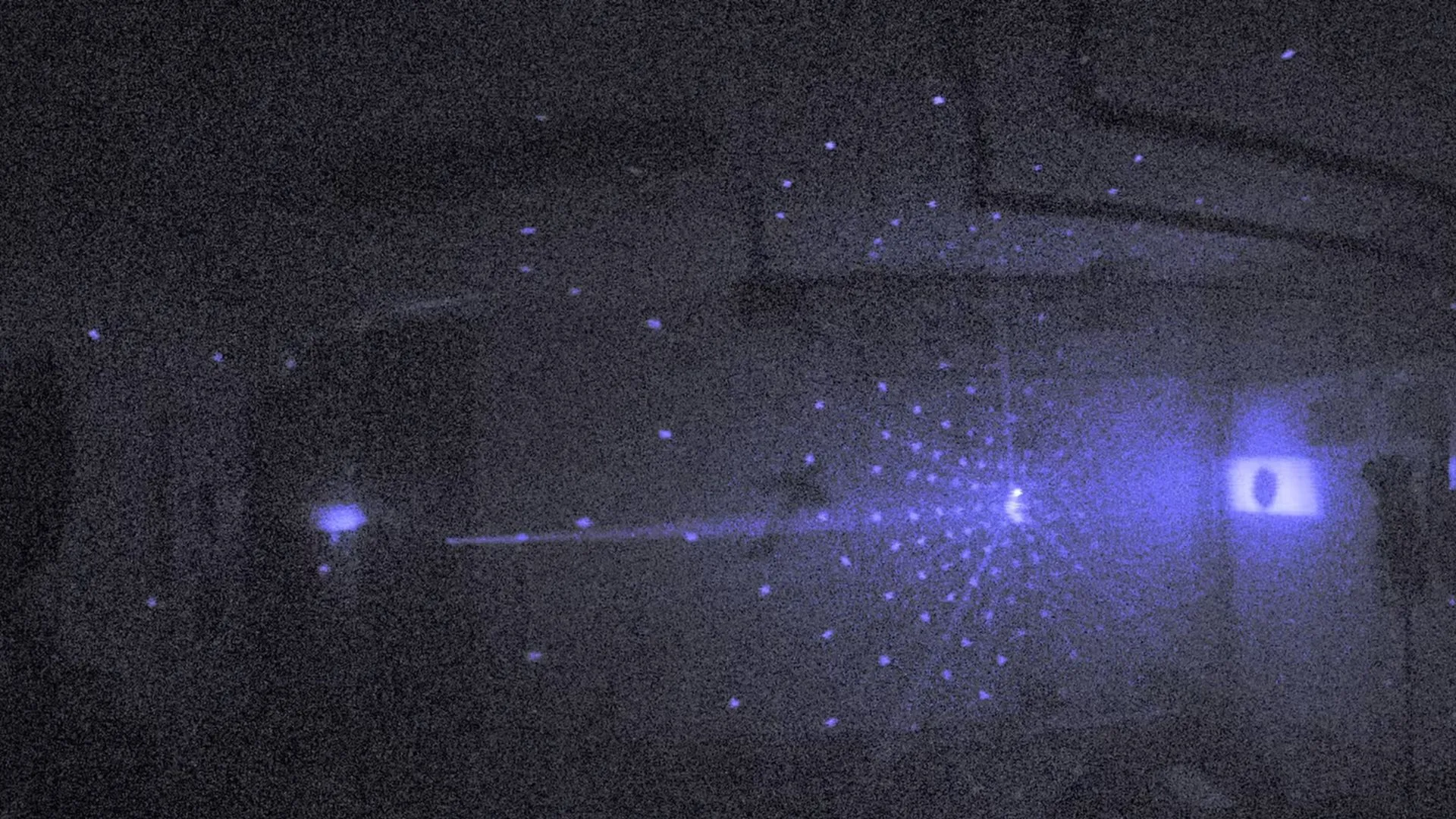Copyright Interesting Engineering

YouTuber Brian Haidet, known online as AlphaPhoenix, has built a camera in his garage that can record at 2 billion frames per second. This incredible speed allows it to capture light moving through the air. Haidet shared the results in a YouTube video on October 17, showing light beams traveling in slow motion. The setup lets viewers witness something that was previously only theoretical: the speed of light, roughly one foot per nanosecond, frozen in individual frames. The garage scientist’s camera setup uses a high-powered laser that fires across his garage, bounces off a mirror, and zigzags between parallel mirrors before hitting a wall. Fog particles in the air scatter the light, making it visible to the sensor. At 2 billion frames per second, the beam transforms into a mesmerizing display of light that behaves in strange, almost science fiction-like ways. Rebuilding for extreme speed The YouTuber previously built a 1 billion frames per second camera in 2024, but to reach this new milestone, he had to rebuild the system from the ground up. He upgraded the motors for higher precision, strengthened the optics for sharper images, and redesigned the software to handle massive amounts of data in real time. These improvements allowed the camera to capture light in motion like never before. The camera’s position affects how the light appears. When placed directly behind the laser, the outgoing beam looks like it is crawling, while the returning light appears nearly instantaneous. This is not a violation of physics. It happens because light bouncing off particles close to the camera reaches the sensor faster than light bouncing off particles farther away. When Haidet moves the camera to the other side of the garage, the effect reverses. The distant light seems to arrive instantly, while the nearby light takes longer. How the camera sees light Capturing a full image at 2 billion frames per second with conventional technology is impossible. Haidet solved this by using a small mirror mounted on a gimbal to sweep the laser light onto a single, highly sensitive sensor. Each sweep records a single pixel, which is then combined to form a complete image. This method is slow but highly precise, effectively simulating a million-dollar camera with thousands of sensors working in sync. To achieve this level of accuracy, Haidet replaced standard hobby servos with high-resolution encoders and timing belts. These components control the mirror movement to a fraction of a degree. Every detail matters, as even tiny deviations could ruin the image. Managing data at superhuman speeds The electronics behind the system are equally sophisticated. A photomultiplier tube converts incoming photons into electrical signals, which travel along coaxial cables to an oscilloscope sampling 2 billion times per second. He developed a clever way to reduce noise by transmitting the PMT signal and a sync pulse through the same cable, carefully timed to arrive independently. This combination of optics, electronics, and software creates a seamless illusion of recording complete frames at record-breaking speeds.



